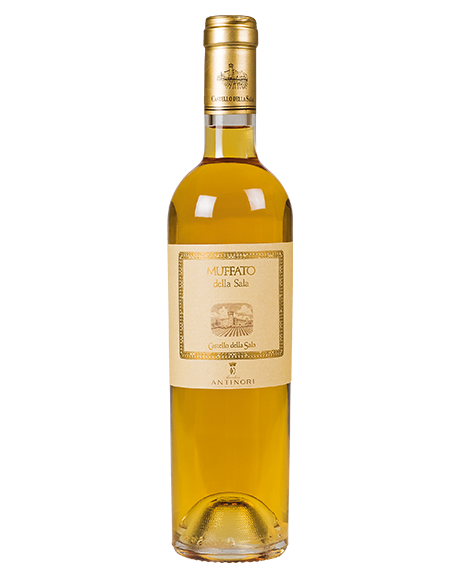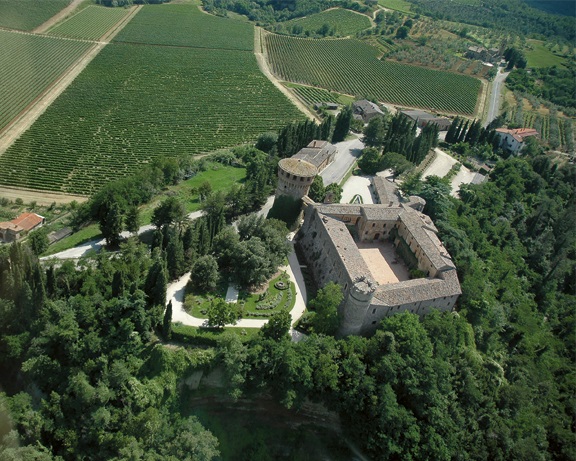
Muffato della Sala is produced with grapes with “noble rot”, harvested in late October and early November to allow the morning mists to develop of Botrytis Cinerea, or noble rot on the grape berries. This type of mould concentrates the water of the crop, its sugars, and its aromas, endowing the Muffato della Sala with a harmonious and unmistakable fragrance. The first year to be produced was the 1987 and consisted of the blend of varieties such as Sauvignon Blanc (50%); Grechetto (30%) and Drupeggio (20%). The composition of the blend has varied over the years and now has attained its definitive results.
Muffato della Sala is a fascinating wine, an expression, in small quantities, of the nature of a unique terroir.
Vineyard: Castello della Sala is located in the Umbria region, not far from the Tuscan border, about 18 kilometers from the historic city of Orvieto.
Castello della Sala is the perfect place for growing white varieties. The vines grow in clay and calcareous based soils, rich in fossil shells, and they are well exposed to the rising of the sun with an excellent difference of temperature between day and night.
This fascinating wine is a blend of Sauvignon Blanc, Grechetto, Traminer, Sémillon and Riesling affected by Botrytis Cinerea (noble rot). The morning mists and local microclimate favour the development of this rot which reduces the water content of the grapes. The resulting concentration of sugars and aromas give the Muffato its special and unmistakeable flavour.
Vinification: The grapes are all sourced from the Castello della Sala vineyards, located between 825 and 1150 feet (250-350 meters) above sea level on clayey soils rich in marine fossils.The grapes were picked by hand in a series of passages through the vineyard, returning various times on the basis of the presence of Botrytis Cinerea - noble rot - on the grapes.
Once in the cellars, the crop was given a further selection on a conveyor belt, and the grapes gently pressed without destemming.
The must, after pressing, fermented for 18 days at temperatures around 62° Fahrenheit (17° centigrade).
The wine, still sweet, then went into Allier and Tronçais oak barrels where it aged for approximately six months before being blended and bottled.
Tasting notes: A brilliant golden yellow in color, the wine shows aromas of dried and candied fruit, nuts, and yellow flowers. Sweet on the palate, the wine is balanced by a highly pleasurable and invigorating freshness. The long aromatic persistence indicates an excellent potential for aging.
Awards: Wine Advocate 96/100 USA and Falstaff 93/100 Austria
- Characteristics
- Producer info
 “When the opportunity arose to create an organization strictly limited to family businesses operating in famous wine producing regions and creating fine wines, we were enthusiastic. The possibility of being able to exchange ideas with other producers and from a family business point of view seemed for us great importance”
“When the opportunity arose to create an organization strictly limited to family businesses operating in famous wine producing regions and creating fine wines, we were enthusiastic. The possibility of being able to exchange ideas with other producers and from a family business point of view seemed for us great importance”